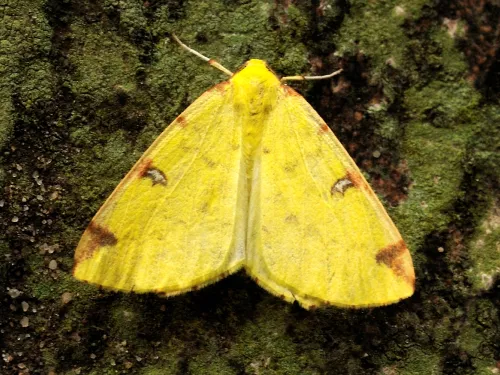Brent goose
The brent goose flies to the UK for the milder winter. Two populations arrive: those with dark bellies can be found around Eastern England
Want to learn more about wildlife near you? You're in the right place, search below and discover the nature you can help protect in Kent.
The brent goose flies to the UK for the milder winter. Two populations arrive: those with dark bellies can be found around Eastern England

The brent goose flies to the UK for the milder winter. Two populations arrive: those with dark bellies can be found around Eastern England; while those with pale bellies can be found in the North East.

One of the joys of a spring day is watching a fluttering, lemon-yellow brimstone alight on a flower - an early sign that the seasons are changing. It is commonly spotted in gardens, woodland and parks.

The brimstone moth is a yellow, night-flying moth with distinctive brown-and-white spots on its angular forewings. It frequently visits gardens, but also likes woods, scrub and grasslands.

The Broad centurion, or 'Green soldier fly', is one of our most common soldier flies, and is often found in gardens. It has hairy eyes and a metallic blue or bronze body. It is an important pollinator.

The Broad-bodied chaser is a common dragonfly that can be seen in summer around ponds and lakes, and even in gardens. It lives up to its name: its flattened body gives it a fat, broad look.

The broad-bordered bee hawk-moth does, indeed, look like a bee! A scarce moth, mainly of Central and Southern England, it feeds on the wing and can be seen during spring and summer.
Broad-leaved dock is well-known to most of us as the remedy for Stinging nettle irritations. Often considered a 'weed', it can be found next to water or on disturbed ground almost anywhere.
A tall orchid of woodland and scrub, the broad-leaved helleborine has greenish, purple-tinged flowers that look a little 'drooping'. Strongly veined, oval leaves spiral around its stem.

Unlike many of its relatives, this shimmering shieldbug is a predator, feasting on caterpillars and a variety of other insects.
A fleshy herb of the wet margins of brooks, streams and ditches, Brooklime can be seen all year-round and provides shelter for tadpoles and sticklebacks.
Broom is a large shrub of heaths, open woodlands and coastal habitats. Like gorse, it has bright yellow flowers, but it doesn't have any spines and smells of vanilla.